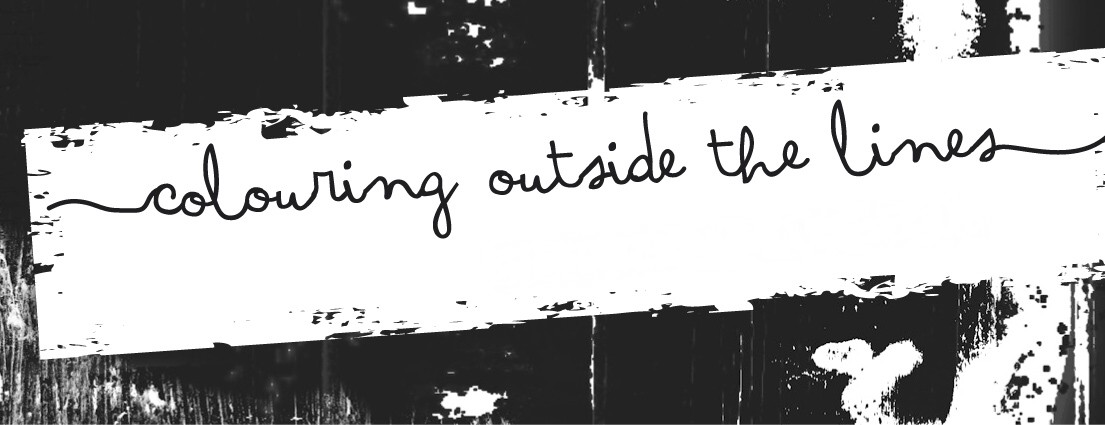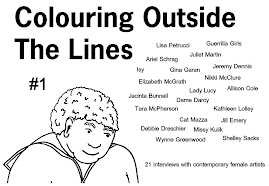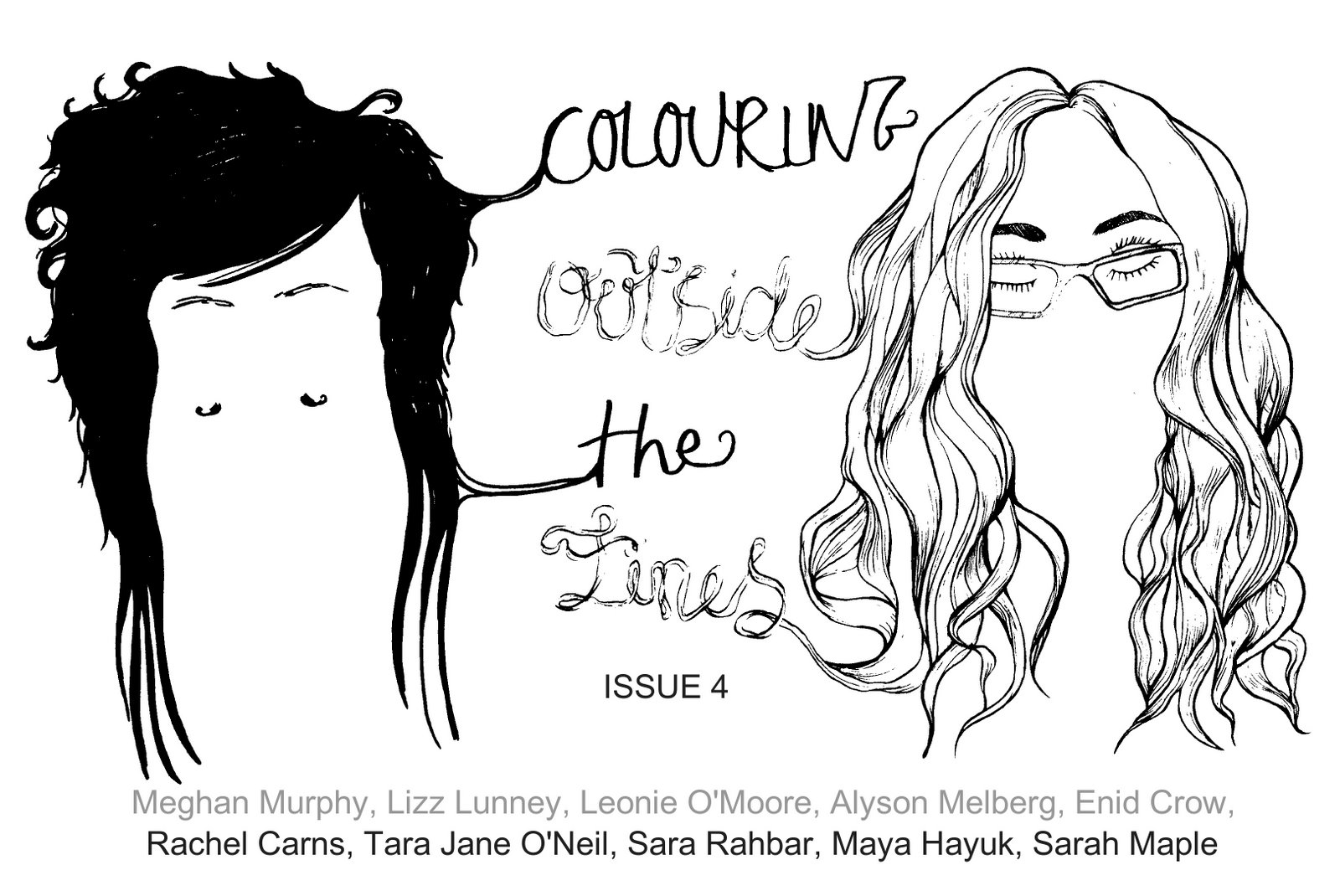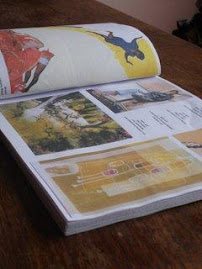
Website: lauramckellar.com
Blog: lauramckellar.blogspot.com/
Online Shop: www.lauramckellar.bigcartel.com/
Zine: iloveokay.com/
Zine blog: www.iloveokay.blogspot.com/
Etsy: etsy.com/shop/sirseven

Hi Laura, could you tell us a little about yourself, and what are you currently working on?
I am a freelance graphic designer living in Melbourne, Australia. I’m currently working on artwork for exhibitions, album artwork, illustrated ceramic brooches, some logos and thinking about my next issue of my zine Okay.
How long have you been creating art, embracing your creativity, and working towards developing your current style and output?
As a little girl I was encouraged to be creative. My sisters and I would spend a lot of time drawing and painting and using mum’s Derwents.
My uncle and grandfather were both photographers and I was influenced at an early age by them. I collect film cameras and use my photographs with illustrations. I am drawn to images I find in old 50s & 60s pattern books and have collected many which have had a significant effect on my work.
I studied graphic design for 5 years at college but I’ve been making things for as long as I can remember. Learning to use design programs on the computer has definitely influenced how I design my artwork.
How did you first learn to access your creative and artistic talents, and gain the confidence to make art your career?
I grew up in a very creative environment. My aunt is a professional illustrator so from a very early age I learned with a lot of hard work and dedication that it is possible to make art your career. I also learned at school that I could make a living from being creative and have since pursued it!

Why do you create? What is it about being creative that makes it something important for you to do?
Creating is a natural occurrence in my life. It makes me feel good and it is the best way for me to express who I am and how I think. I love making pictures whether they are for a job or an artwork, it is the most fulfilling time I use.
Where did your interest in collage, retro/found images, and mixed media come from, and how has your art developed over the years to incorporate it?
I have been collecting second hand picture books and dress pattern books for two reasons: 1. To use in my design + art work and 2. Because I can’t leave an op shop without one! I like the desaturated colours, detailed illustrations and the dreamy landscapes. The photographs in pattern books are so classic and I like the beautiful handmade clothing.
Although my work looks nothing like his I was influenced by Fred Free’s use of found images. Through making my own zine ‘Okay’ I have experimented with ways to use these images and right now am really enjoying using the found images with embroidery.
Where and how did you learn of your skills and interest in textiles and embroidery, and come to use these techniques within your work?
How do you actually construct each embroidered piece – do you sew directly onto paper?
I learned about sewing at a young age, my mum used to make all of our clothes and we were given hand-embroidered singlets for birthdays as children.
I have collected a lot of second hand sewing reference books and embroidery was something that appealed to me. You don’t have to be a master at it to make it look special. I transferred my drawings onto fabrics and started embroidering small details and have continued working like this.
Do you enjoy the processes of ‘handmade’?
As a child I received handmade birthday and Christmas presents which always felt so special to me. They had this very unique quality and aesthetic that felt so personal. I don’t think you can have the same emotional connection with another bought object that you can with a handmade present you receive from a loved one. It holds a much higher sentimental value that cannot be replaced. The time someone puts into handmade work is very precious and I value that.

How and why do you self-publish your artwork within your handmade zine, Okay?‘Okay’ is a personal project that I can have total freedom over everything! I love putting together in their special order. I send it to people I admire and people who are special to me. It’s also a great self-promotional piece.
Does each issue allow you to follow a unique theme?
I base the issue on something I am dreaming about. The theme of the last issue was Exploring and it is made up of pictures of places in my dreams and things I will do when I go exploring.
What is your history in independent self-publishing? Is Okay your first zine?‘Okay’ is my first attempt at self-publishing my own work. With the evolution of the Internet it is continually becoming easier to market yourself online and reach a broad audience. Through my zine I have connected with other people who self-publish from all over the world.
Do you think zines are a good way to share art, to display art, and to reach (new?) audiences or artistic communities?
I think putting together a zine is a personal experience because you put in so much time and effort with the content and then to go ahead with printing and publishing. In Australia zines are becoming popular and lots more people are starting to make them using their own artwork or featuring other artists. It’s very easy to get your work out there through online art and social communities. Okay has been featured on some respectable websites and blogs, it has allowed me to connect people who may have never seen it in a specialist zine shop.
Have you employed skills learned via self-publishing/ DIY publishing (skills perhaps of networking; working independently – utilising the skills and talents you have; creating/printing things yourself, from scratch; working in a handmade way; honing your skills, interests and ways of working outside of mainstream constraints; approaching interested and interesting parties yourself; exhibiting in communal ways, on collaborative projects and exhibitions, etc) in your everyday artistic practice? Do you find the worlds of art and DIY self-publishing intersect in such ways?
Through self-publishing Okay I have learned to push the boundaries and experiment with different stocks and printing techniques that I can do myself. It has influenced my approach to materials I use for my artwork. I learned to print on fabric this way.
I like to hold craft days with my friends in my studio. We make our own creative environment to inspire each other when we’re working on our projects.
Amelia Gragory, recently interviewed on Pikaland was asked, ‘What do you think is the biggest challenge for illustrators today?’ to which she replied: “There are just so many illustrators out there that the biggest challenge is getting your work seen and known. There isn’t a massive market for commercial illustration – at least not of the type that most illustrators enjoy creating.”What are your thoughts on this, from your own experience, and how do you personally approach this challenge?
I do agree with Amelia, she is right that it can be very tough. I have personally dealt with clients who take advantage of my skills and expect me to work for free. They think they’re doing me a favor by letting me do a job for them, to get my name out there. In the past I have done the work purely because it will look good in my folio, but to be honest it was the start of a bad reputation.
The thing about being creative is you never stop using that skill, it is inbuilt and if you are motivated enough you can focus on personal work to send around, put up on an online shop, and keep on your website.
Nature and fauna, alongside the human form often intersect within your work, (I’m thinking here of the animal mask portraits, and of your images of humans with animal heads -and visa versa.)
Is this as an exploration of identity? A comment on animals and humans sharing the same earth? Or, like me, do you just think people look funny, beautiful, and rad with animal heads and animal features?
Anthropomorphism (animals adopting human characteristics), humans with animal features and human interacting with animals are reoccurring themes in my work. I grew up watching Disney and more recently Studio Ghibli and reading picture books like Beatrix Potter stories which show similar concepts. The way children have relationships with the animals with no inhibitions and with free imagination, they live in harmony together. I am very interested in the relationship and I very strongly believe animals should be given a voice. This is the reason I express these concepts in my work. It does make me smile looking at an illustration of a Hare wearing a cable knit jumper or a gorgeous girl with a bird nest for hair!
What’s your favorite art project that you’ve worked on so far?
My favorite project is collecting and making images for my zine. I’ve taken Polaroids in Indonesia and Japan, found some beautiful second hand picture books in op shops, made stickers on my typewriter. When I have no jobs on I like to sit on my computer and play with pictures and compositions, combining different papers for the pages and putting them in a perfect order.


















